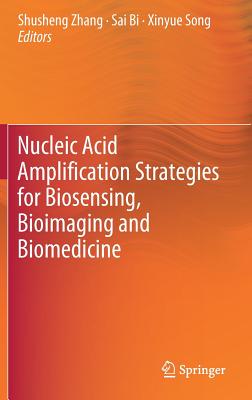Bacterial Sensors: Synthetic Design and Application Principles (Synthesis Lectures on Synthetic Biology)
暫譯: 細菌感測器:合成設計與應用原則(合成生物學講座系列)
Jan Roelof van der Meer
- 出版商: Morgan & Claypool
- 出版日期: 2011-03-01
- 售價: $1,520
- 貴賓價: 9.5 折 $1,444
- 語言: 英文
- 頁數: 168
- 裝訂: Paperback
- ISBN: 1598299115
- ISBN-13: 9781598299113
-
相關分類:
生物資訊 Bioinformatics
海外代購書籍(需單獨結帳)
相關主題
商品描述
Bacterial reporters are live, genetically engineered cells with promising application in bioanalytics. They contain genetic circuitry to produce a cellular sensing element, which detects the target compound and relays the detection to specific synthesis of so-called reporter proteins (the presence or activity of which is easy to quantify). Bioassays with bacterial reporters are a useful complement to chemical analytics because they measure biological responses rather than total chemical concentrations. Simple bacterial reporter assays may also replace more costly chemical methods as a first line sample analysis technique. Recent promising developments integrate bacterial reporter cells with microsystems to produce bacterial biosensors. This lecture presents an in-depth treatment of the synthetic biological design principles of bacterial reporters, the engineering of which started as simple recombinant DNA puzzles, but has now become a more rational approach of choosing and combining sensing, controlling and reporting DNA 'parts'. Several examples of existing bacterial reporter designs and their genetic circuitry will be illustrated. Besides the design principles, the lecture also focuses on the application principles of bacterial reporter assays. A variety of assay formats will be illustrated, and principles of quantification will be dealt with. In addition to this discussion, substantial reference material is supplied in various Annexes. Table of Contents: Short History of the use of Bacteria for Biosensing and Bioreporting / Genetic Engineering Concepts / Measuring with Bioreporters / Epilogue
商品描述(中文翻譯)
細菌報告者是活的基因工程細胞,在生物分析中具有良好的應用前景。它們包含基因電路以產生細胞感測元件,該元件能夠檢測目標化合物並將檢測結果傳遞至特定合成的所謂報告蛋白(其存在或活性易於量化)。使用細菌報告者的生物檢測是化學分析的有用補充,因為它們測量的是生物反應而非總化學濃度。簡單的細菌報告者檢測也可能取代更昂貴的化學方法,作為第一線樣本分析技術。最近的有希望的發展將細菌報告者細胞與微系統整合,以製作細菌生物感測器。
本講座深入探討細菌報告者的合成生物設計原則,其工程起初是簡單的重組DNA拼圖,但現在已成為一種更理性的選擇和組合感測、控制和報告DNA「部件」的方法。將舉例說明幾個現有的細菌報告者設計及其基因電路。除了設計原則外,講座還專注於細菌報告者檢測的應用原則。將展示各種檢測格式,並討論量化原則。除了這些討論外,還提供了大量的參考資料於各個附錄中。
目錄:細菌在生物感測和生物報告中的短暫歷史 / 基因工程概念 / 使用生物報告者進行測量 / 結語












